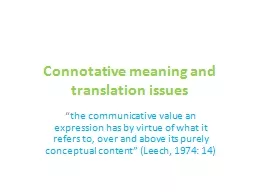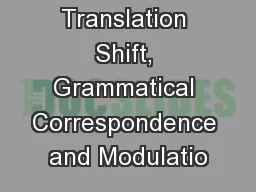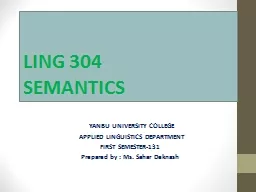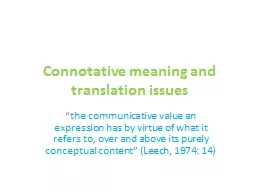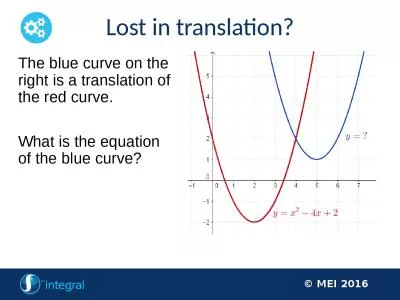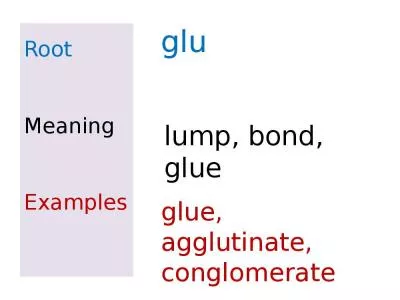PPT-Connotative meaning and translation issues
Author : karlyn-bohler | Published Date : 2015-11-22
the communicative value an expression has by virtue of what it refers to over and above its purely conceptual content Leech 1974 14 For example the word woman
Presentation Embed Code
Download Presentation
Download Presentation The PPT/PDF document "Connotative meaning and translation issu..." is the property of its rightful owner. Permission is granted to download and print the materials on this website for personal, non-commercial use only, and to display it on your personal computer provided you do not modify the materials and that you retain all copyright notices contained in the materials. By downloading content from our website, you accept the terms of this agreement.
Connotative meaning and translation issues: Transcript
Download Rules Of Document
"Connotative meaning and translation issues"The content belongs to its owner. You may download and print it for personal use, without modification, and keep all copyright notices. By downloading, you agree to these terms.
Related Documents

